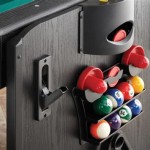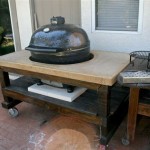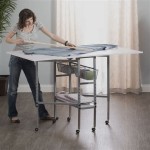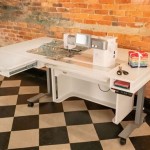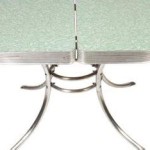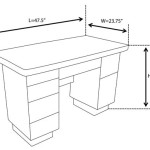What Is The Length Of A Full-Size Snooker Table In Feet?
The precise dimensions of a full-size snooker table are fundamental to the game. Understanding these dimensions is crucial not only for players but also for those involved in manufacturing, maintaining, and establishing official rules for the sport. The length of the table, specifically, is a significant factor influencing gameplay, strategy, and the overall experience of snooker.
The standard measurement for a full-size snooker table is expressed in feet and inches. Officially, a full-size snooker table measures 12 feet in length and 6 feet in width. These dimensions are not arbitrary; they have been established and refined over the history of the game to provide a balanced and challenging playing environment. The ratio of length to width, which is 2:1, is also an important aspect of the table's design, contributing to the game's strategic depth.
It's important to note that these dimensions refer to the playing area inside the cushions, also known as the baulk line to cushion measurement. The overall external dimensions of the table will be slightly larger due to the presence of the cushions and the frame surrounding the playing surface. This additional space must be considered when planning for the installation of a snooker table, ensuring adequate room for players to move around and execute shots comfortably.
The Importance of Accurate Dimensions
The accuracy of the snooker table's dimensions is paramount for fair and consistent gameplay. Even slight deviations from the standard measurements can significantly impact the trajectory of the balls, the difficulty of shots, and the overall flow of the game. Professional snooker tournaments, and indeed any competitive match, require tables that adhere strictly to the official specifications to ensure a level playing field for all participants.
Manufacturers of snooker tables invest considerable effort in ensuring their products meet the required standards. This involves precise cutting of the slate bed, careful construction of the frame, and accurate placement of the cushions. The process often involves sophisticated machinery and skilled craftsmanship to achieve the necessary level of precision. The quality of the materials used, particularly the slate bed, also plays a crucial role in maintaining the table's dimensional stability over time.
Furthermore, maintaining the correct dimensions is an ongoing process. The felt covering the table can stretch or shrink over time, and the cushions can lose their resilience, both of which can affect the playing surface and subtly alter the dimensions. Regular maintenance, including re-stretching the felt and replacing worn cushions, is essential to preserve the table's accuracy and ensure optimal gameplay.
Understanding Tolerances and Variations
While the official dimensions of a full-size snooker table are 12 feet by 6 feet, there is a degree of tolerance allowed within the regulations. This tolerance acknowledges the practical challenges of manufacturing and maintaining such large surfaces to absolute perfection. However, the permissible variations are typically very small, measured in millimeters rather than inches, and are carefully defined by the governing bodies of the sport.
The World Professional Billiards and Snooker Association (WPBSA) sets the standards for snooker table dimensions and tolerances. These standards are regularly reviewed and updated to reflect advancements in manufacturing techniques and the evolving needs of the game. Adherence to these standards is a key requirement for tables used in professional tournaments and sanctioned events.
It is also important to be aware that smaller snooker tables, sometimes referred to as "half-size" or "three-quarter size" tables, exist. These tables are designed for recreational use or for spaces that cannot accommodate a full-size table. While they offer a similar playing experience, the dimensions are significantly reduced, affecting the gameplay dynamics and strategic considerations.
When purchasing a snooker table, it is crucial to verify its dimensions and ensure that it meets the standards required for the intended use. Reputable manufacturers will provide detailed specifications and certifications to confirm that their tables comply with the official regulations. This information will help ensure that the table provides a true and consistent snooker playing experience.
Measuring a Snooker Table Accurately
To accurately measure a snooker table and verify its dimensions, several tools and techniques can be employed. A long, accurate measuring tape is essential for determining the length and width of the playing area. It is important to measure from the inside edge of the cushions, rather than the outside edge of the frame, to obtain the correct dimensions of the playing surface.
When measuring the length, ensure that the tape measure is held taut and straight, running from the baulk line cushion to the opposite cushion. Similarly, when measuring the width, ensure that the tape measure is perpendicular to the length and held taut across the table. Taking multiple measurements at different points along the length and width can help identify any inconsistencies or deviations from the standard dimensions.
In addition to measuring the overall length and width, it is also important to check the straightness and levelness of the table. A spirit level can be used to ensure that the playing surface is perfectly horizontal, which is crucial for accurate ball roll. Any unevenness can affect the trajectory of the balls and make it difficult to play consistent shots.
Furthermore, the height of the cushions should be measured to ensure that they are within the specified range. The correct cushion height is essential for proper ball rebound and consistent gameplay. The WPBSA regulations specify the acceptable range for cushion height, and any deviations from this range should be addressed to maintain the table's playing characteristics.
Regularly checking the dimensions of a snooker table is a good practice, especially in environments where the table is subject to frequent use or significant temperature fluctuations. This will help identify any issues early on and allow for timely corrective action, ensuring that the table continues to provide a fair and enjoyable playing experience.
The accuracy of the snooker table's dimensions relies not only on the initial manufacturing process but also on the choice of materials used. The slate bed, for example, should be made from high-quality, dense slate that is resistant to warping or cracking. The frame should be constructed from strong, stable timber that can withstand the weight of the slate and the stresses of gameplay. The felt covering the table should be durable and tightly woven to provide a smooth, consistent playing surface.
The cushions are another critical component of the snooker table, and their quality can significantly impact the game. The cushions should be made from high-quality rubber that provides consistent rebound and resilience. The shape and profile of the cushions should also conform to the official specifications to ensure that the balls react predictably when striking them. Over time, the cushions can lose their resilience and may need to be replaced to maintain the table's playing characteristics.
In addition to the physical dimensions of the table, the lighting above the table is also an important factor in gameplay. Proper lighting is essential for clear visibility and accurate shot execution. The lighting should be evenly distributed across the playing surface and should not cast shadows that could obscure the balls. The intensity of the lighting should also be appropriate to avoid glare or eye strain. The positioning of the lights should be carefully considered to minimize any interference with players' movements.
The environment in which the snooker table is located can also affect its performance and longevity. Ideally, the table should be placed in a room that is relatively free from dust, moisture, and extreme temperature fluctuations. Dust can accumulate on the felt and affect ball roll, while moisture can warp the wooden frame and damage the slate bed. Extreme temperature fluctuations can cause the felt to stretch or shrink, affecting the playing surface. Proper ventilation and humidity control can help create a stable environment that prolongs the life of the snooker table.

The Official Size Of A Pool Table Canadian Home Leisure

Complete Guide To Pool Table Size And Room Dimensions Sawyer Twain

Pool Table Sizes And Solo Room Size Guide Harrisburg

Fcsnooker Snooker Table Hole Centres For The Legs

Pool Table Measurements

Snooker Table Width

Snooker Tables Choosing The Perfect Table

Fcsnooker Snooker Table Hole Centres For The Legs
Valentine S Day Best Pool Table Sizes For You Sawyer Twain

Pool Table Dimensions


